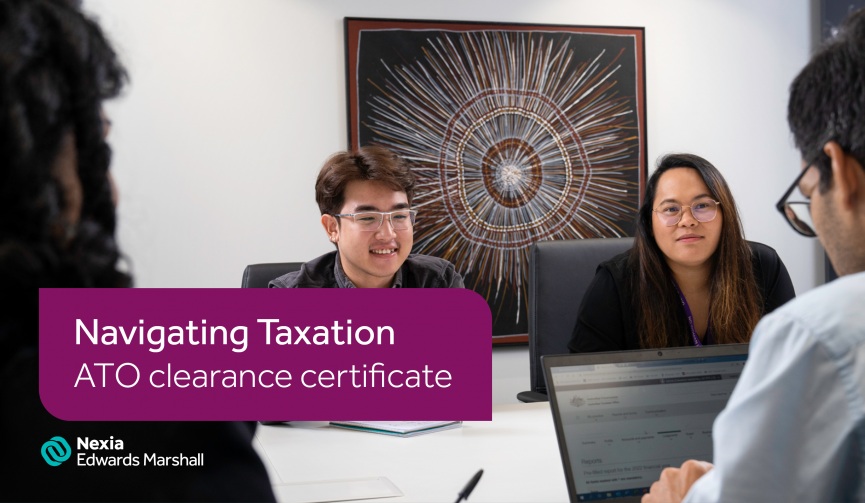We provide clients with many professional and technical services. For a detailed description, please select the relevant service.
Great
News
Dec 18, 2023 / News
Everyone selling land must now get an ATO clearance certificate

Last week the Government released the 2023-24 Mid-Year Economic and Fiscal Outlook (MYEFO), which contained 2 tax changes worth noting.
Here we have outlined these changes so you can understand what they mean to ensure you are ready for what’s next.
1. ATO interest charges no longer deductible
The ATO imposes 2 types of interest charges, being General Interest Charge (GIC) and Shortfall Interest Charge (SIC). GIC applies to outstanding tax debts generally, and SIC applies to tax debts arising from an amended assessment, imposed on the time period up to the amendment.
From 1 January 2024, the GIC rate will be 11.38% and the SIC rate will be 7.38%. These interest charges are tax-deductible for all entities. However, the Government will legislate to remove deductibility for GIC and SIC incurred in income years starting on or after 1 July 2025.
This change will increase the cost of paying a tax liability late or rectifying a shortfall in your self-assessed tax liability. Accordingly, there will be an added incentive to correctly self-assess tax liabilities and pay on time. There will also be greater motivation to draw upon other sources of credit to finance the payment of tax liabilities.
2. Now everyone selling real property must obtain an ATO clearance certificate
Currently, where a foreign resident sells real property or related interests in Australia with a sale price of $750,000 or more, the purchaser is required to withhold 12.5% of the entire sale price and remit to the ATO. The foreign resident is entitled to a credit against their Australian tax liability upon lodging the relevant income tax return that includes any capital gain arising.
For an Australian resident (individual, company or trust) to avoid being subject to withholding when selling real property with a price of $750,000 or more, they must obtain prior to settlement a clearance certificate from the ATO verifying that they are an Australian resident. If they have not obtained a clearance certificate, the purchaser must, and is entitled to, withhold the 12.5% and remit to the ATO. It does not matter that the property might be a fully tax-exempt family home – your only recourse is to lodge the relevant tax return in due course and get a refund.
For sales under contracts entered into from 1 January 2025, the withholding rate will increase to 15%. However, what will have a widespread effect is that the sale price threshold at which a purchaser must withhold will be reduced to nil. This will now mean that every Australian resident vendor of real property must obtain a clearance certificate prior to settlement. Otherwise, 15% of the sale price will be withheld.
Failure to obtain a clearance certificate in time could be challenging, such as where the withholding would leave insufficient funds to clear an existing mortgage, resulting in deferring settlement.
Next steps
In most cases, obtaining the clearance certificate is relatively straightforward, but is best attended to sooner rather than later.
Talk to your trusted Nexia Edwards Marshall Advisor about how we can help you navigate your tax obligations or if you have any questions about the matters discussed in this article.
The material contained in this publication is for general information purposes only and does not constitute professional advice or recommendation from Nexia Edwards Marshall. Regarding any situation or circumstance, specific professional advice should be sought on any particular matter by contacting your Nexia Edwards Marshall Adviser.

